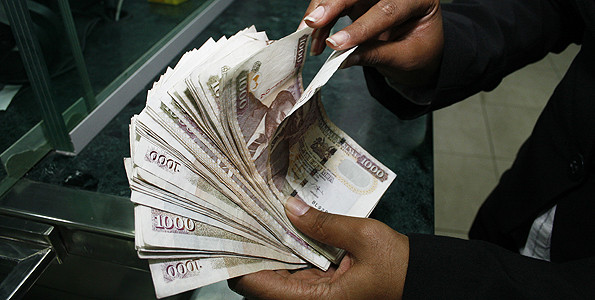Kenya's Shilling Plunges as Terrorism Keeps Tourists Away

The Kenyan shilling has fallen to a 31-month low as increasing terrorist attacks have been keeping tourists away from the east African country, weakening its capacity to repay foreign currency loans.
The USD/KES pair rose to as high as 88.72 on 26 August, its highest since January 2012, and from the previous close of 88.30. The shilling has weakened 1.3% so far in August and 2.8% from end-2013.
Import-related dollar demand has been higher in the interbank market these days, according to a Reuters report.
The country's first-ever sovereign bond, sized $2bn, was issued in June this year, and with that the total debt has risen to $26.78bn, 57% of the GDP, according to the latest treasury statement.
Weaker shilling will make financing of the country's dollar-denominated debt tougher, and with the political scene unlikely to improve anytime soon, economic challenges are only going to worsen, analysts say.
Concerns of Tourism Industry
International tour operators are not favouring the Kenyan coast now, and occupancy rates in most hotels and resorts have fallen sharply. Tourism contributes 13.7% to the Kenyan GDP.
More than 100 terrorist incidents have occurred within Kenya since 2011, mainly attributed to a retaliatory terror campaign by the Somali militant group, Al Shabaab, in an effort to force the authorities to pull out of Somalia, a recent report by Moody's Investors Service showed.
Some reports estimate the potential loss to the hospitality industry in the current year at 40bn Kenyan shilling ($450m) due to the insurgency. The occupancy rate in the south coast is reported to be 25-30% as against a normal level of 70-80%.
GDP and Inflation
As per the 30 June data, the Kenyan economy expanded 4.1% from a year earlier in the first three months of 2014, unchanged from the previous quarter, as bad weather and lower external demand hurt agriculture production while activities in hotels and restaurants shrank 3%.
At the same time, inflation is accelerating on rising fuel import costs and the recent weakening in shilling should add to the inflationary pressures.
The Kenyan annual inflation rate accelerated for the fourth straight month to 7.7% in July from 7.4% in June, mostly due to higher prices of food and energy, data showed on 1 August. The August rate will be published on 29 August.
Monetary Policy
The Kenyan central bank is already watchful of the civil and military unrest in the oil producing regions.
"The persistent instability in the Middle East and North African region remains a threat to the stability of international oil prices and the overall price stability objective," the CBK said in its monetary policy statement.
The Kenyan central bank had kept its benchmark interest rate unchanged at 8.5% at its July meeting, where it was less concerned about volatility in exchange rates.
The situation has now worsened. Unless something is done urgently, the tourism industry is not going to normalise before late 2015, according to experts.
The upcoming economic data prints and the foreign exchange market developments are crucial for Kenya and the policymakers should be prepared to take bolder steps to keep the growth momentum.
Rating Fears
Moody's has already warned that the stable outlook on the country's B1 credit rating is under threat due to the deteriorating security situation there.
"An ongoing erosion of consumer, business and investor confidence risks lower growth, capital inflows and foreign exchange reserves, which would exert downward pressure on the country's B1 rating," the international rating agency said in its July newsletter.
© Copyright IBTimes 2025. All rights reserved.






















